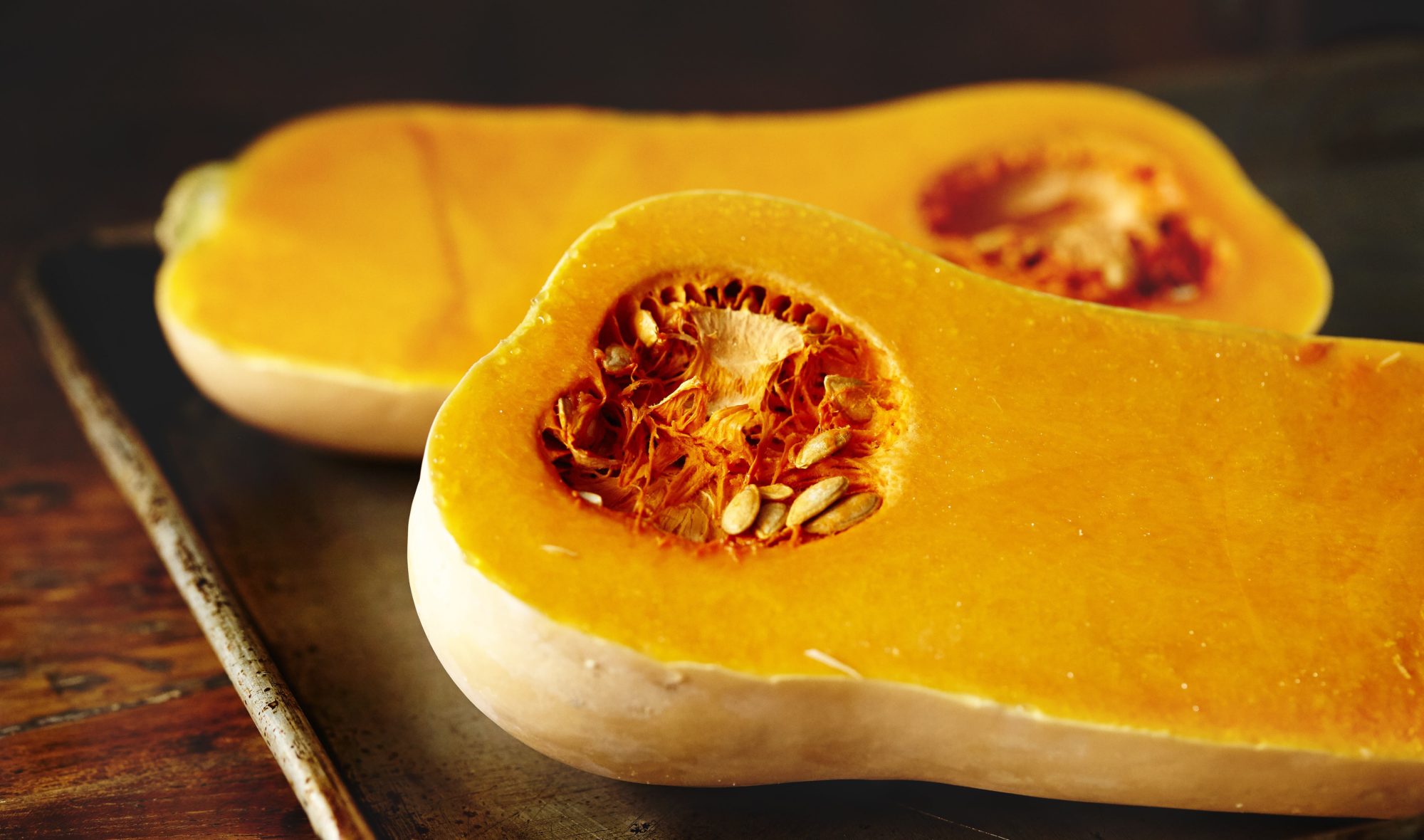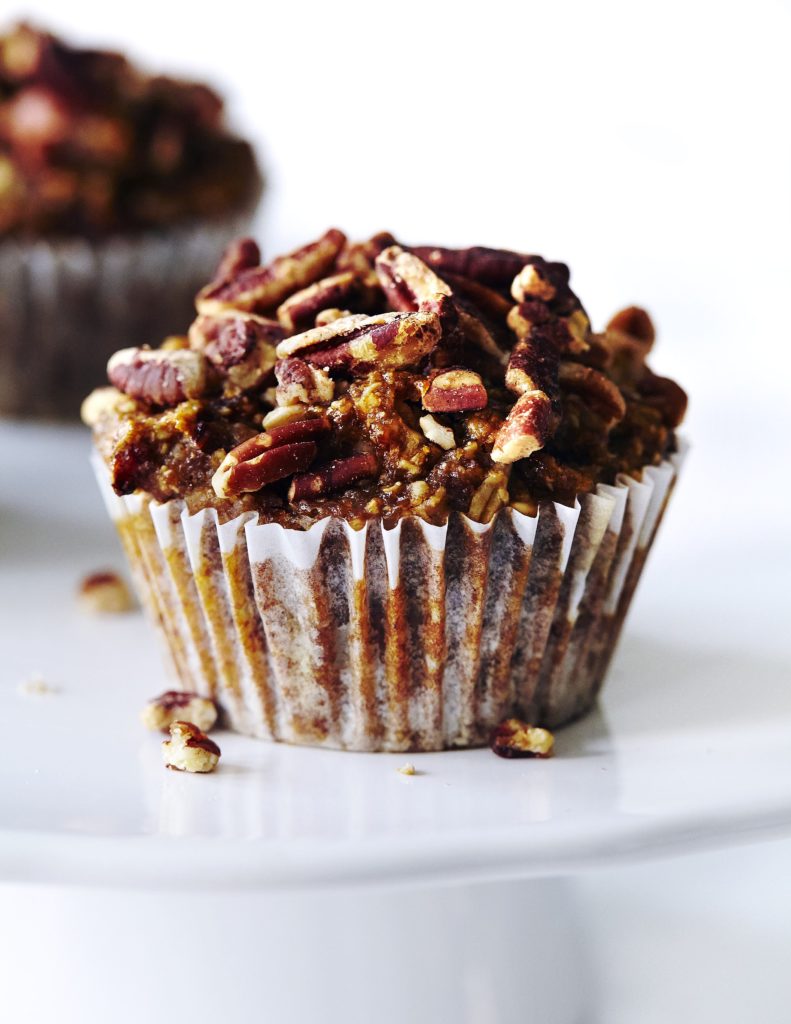Butternut Squash


Butternut squash is a large, bell-shaped squash with sweet-flavored flesh. Though low in calories, butternut squash is high in nutrients: it offers vitamins A and C along with fiber, potassium, and magnesium. Butternut squash is one of the most popular squashes; its mild, sweet flavor and smooth-textured flesh makes it a favorite. Like other fall squashes, butternut squash should be kept in a cool, dark, and dry place: stored appropriately, the squash can last for weeks or even months. To enjoy butternut squash, cook it by roasting, baking or microwaving the squash, then enjoy as a side dish or in your favorite recipe.
A member of the squash family, butternut squash grows on a vine and comes into peak season in early fall through winter.
Though technically a fruit, butternut squash is cooked (roasting is a popular preparation) and eaten as a vegetable.
Butternut squash has a bell-like shape. Its tough rind has smooth skin and a creamy yellow-beige color.
The inner flesh of the squash is orange and pumpkin-like in both color and texture. The white flat seeds inside are similar to pumpkin seeds.
One cup of cubed, raw butternut squash typically has 63 calories, 1.4g of protein, 0.1g of fat, 16.4g of carbohydrates, 2.8g of fiber, and 3.1g of sugar.
Butternut squash also packs plenty of vitamin A, vitamin C, potassium, and magnesium.
Look for squash with minimal bruising and no obvious cuts or oozy areas. The squash should feel heavy for its size.
Tip: In the fall months, squash can sometimes be found at farm stands, farmers’ markets, or “U-Pick” pumpkin and gourd farms. Purchasing at these locations can help you get a squash with maximum flavour.
If you plan on eating the squash soon, you can keep it on your countertop for up to a week. For longer storage, keep it in a cool, dark place such as a cold storage room. A properly stored squash can last for weeks or even months.
Diced raw butternut squash can be refrigerated for two to three days.
Once cooked, butternuts squash will keep in the fridge for up to 5 days.
Butternut squash is known for its pleasant, sweet flavor. In cooking, the flesh becomes smooth and soft; because it doesn’t get stringy like some squashes, it is excellent roasted as a side dish, or made into soup. It can sometimes be used as an alternative to pumpkin or sweet potato.
Roasted butternut squash: Roasting is a common, versatile preparation that accentuates the squash’s sweetness and buttery texture. To roast butternut squash, pre-heat oven to 475°F. Using a sharp knife, cut the top and bottom off the squash. Then cut the squash in half lengthwise. Next, using a sharp knife or sturdy peeler, cut the tough skin off the squash. Scoop out the seeds and stringy flesh with a large spoon. Then cut the flesh into a large dice (cubes). Place the cubes on a baking sheet. Drizzle generously with olive oil, salt, and pepper. Roast for about 15 minutes. Flip the cubes and return to the oven until golden-brown and fork tender, about 5 to 10 more minutes.
Baked butternut squash: Cut a whole butternut squash in half lengthwise. Scoop out the seeds and stringy flesh with a spoon. Next, place it on a cookie sheet, cut side facing up. Bake at 350°F for 45-60 minutes or until soft when poked with a fork. Remove flesh from skin using a spoon. Enjoy as is, mashed and flavored with salt and pepper and butter, or use it in other preparations.
Microwaved butternut squash: Cut a whole butternut squash in half lengthwise. Scoop out the seeds and stringy flesh with a large spoon. Place it on a microwavable plate. Place in microwave and cook on high for 15 minutes until fork tender. Remove the flesh with a spoon and enjoy.

These muffins make for the perfect fall treat. The combination of spices and savory ingredients are sure to satisfy. Enjoy as breakfast, snack, or dessert.
Prep Time: 15 minutes Cook Time: 35 minutes Yield: 12 jumbo muffins
Boil water in your kettle. Measure out the raisins and water. Pour the water over the raisins and let them soak for 10 minutes. Once the 10 minutes is up, transfer the water + raisin mixture to your blender or food processor. Add pecans, oats, and bananas to your blender or food processor and blend until smooth.
Transfer contents of blender / food processor into a large mixing bowl.
Add remaining ingredients to the mixing bowl and stir until well combined.
Using coconut oil or cooking spray, lightly grease two jumbo muffin pans (pan for 6 large muffins instead of 12 regular sized muffins). Pour the batter into the muffin cups filling the cups to the top. Garnish generously with chopped pecans.
Bake the muffins in preheated 350°F oven for 30-35 minutes or until golden brown.
Note: if you make these in a regular sized muffin pan (not jumbo), cooking time will be less.
Note: you can purchase canned butternut squash purée at your local health food store. You can also make your own purée by baking a butternut squash and then puréeing it in your blender or food processor. Another option is to substitute the butternut squash purée for pumpkin purée.
Store leftovers in fridge.
Enjoy!
Precision Nutrition’s Encyclopedia of Food expands every single month as we highlight new foods and showcase beautiful food photography. If you’d like to stay up to date, simply click this link. From there, we’ll send you a FREE copy of our recipe book. We’ll also let you know when new and delicious foods are added to the site.
Butternut squash is a large, bell-shaped squash with sweet-flavored flesh. Though low in calories, butternut squash is high in nutrients: it offers vitamins A and C along with fiber, potassium, and magnesium. Butternut squash is one of the most popular squashes; its mild, sweet flavor and smooth-textured flesh makes it a favorite. Like other fall squashes, butternut squash should be kept in a cool, dark, and dry place: stored appropriately, the squash can last for weeks or even months. To enjoy butternut squash, cook it by roasting, baking or microwaving the squash, then enjoy as a side dish or in your favorite recipe.